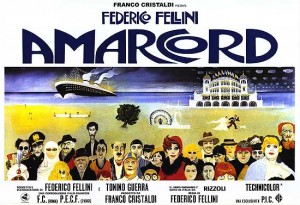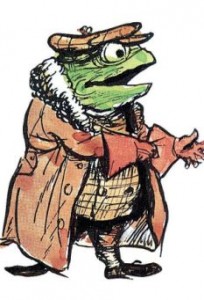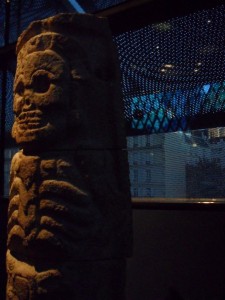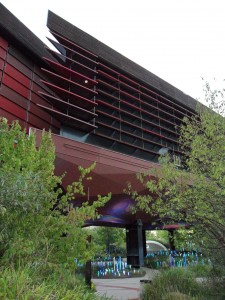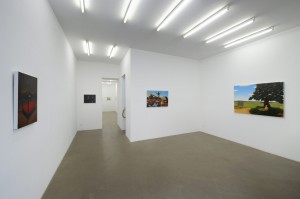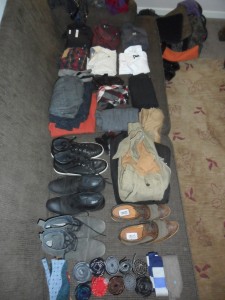It’s rather revealing taking the RER train from Paris to its outskirts (banlieue). The RER lines, the few larger trains that service the city like the metro, allow access from Paris to its many neighborhoods and beyond. Students like me take the RER to reach tourist sites like Versailles, le chateau de Chantilly, or other Aristocratic domiciles-turned-tourist sites. And yet the RER serves another purpose – that of piercing the bubble that surrounds the city of Paris. For the habitants of suburban Paris, the RER allows direct access to the heart of the traditional city, cutting across the different layers of social stratification. It’s funny then, as I take my train to see France’s “treasures”, that the ride reveals such marked societal differences.
An intriguing aspect of society that is revealed en train is the very active graffiti culture. Graffiti marks the walls of ancient buildings, the dripping subterranea of the metro system, apartment buildings, monuments . . . anywhere really. The graffiti often serves, like below, as a a sort of transgression of the sometimes-stifling bubble of the past that France often hides under. Or at least that’s how the younger generations are likely to see it.
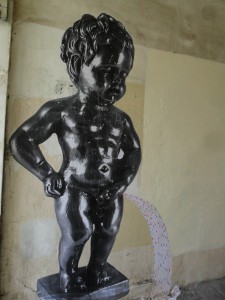
Graffiti can reveal a certain irreverence for traditional french art, a statement against a seemingly regressive adulation of France's cultural past
There is, in effect, a twofold stratification that marks the Paris (and France) of today. There is the economic and social stratification that reveals itself in the daily RER users (the predominance of which I can assure you are not white). The “liberated” and “modernly educated” youth may not have completely freed themselves of the traditionalism of their society. I notice, on the ride back to Paris, a young, white teenager seat himself on the RER. He waves fondly to his parents out the window as he rolls away to the “real world”, the city that is Paris. I notice his face marked with displeasure as two black men seat themselves beside him at the next stop. And I wonder how real this world is, this Paris the french youth experience? The further you get to the center of Paris “the escargot”, the lesser the diversity, and greater the affluence. Wealthy youth parade in heels, blazers, dresses seeking neon lights and alcohol on weekend nights. The Parisian nightlife is “super cool” . . . if you have the money for it.
France is marked by a certain social atmosphere. Older generations prefer the rosy image of the France of their youth – that which is daily “transgressed” by the younger generations (citing graffiti, proliferation of American culture, etc.), shifting the conventional view of French identity. Traditional France – its art, culture, and markedly its social hierarchy (purism) – is guarded carefully. The government creates around Paris a bubble that idealizes the golden age of Paris. And on the surface Paris succeeds in matching itself to its postcard depictions for the economic support of tourists. The Péripherique (autoroute) cuts Paris into an awkward oval, yet very distinctly walls in Paris Proper. Outside of the Péripherique, cités (towering low-budget apartment complexes) rise amidst a dreary, decidedly unromantic landscape. And trailing from the banlieues into the countryside, the bidonvilles flash by, desperate shanty towns of which many Parisians are unaware.

A bidonville seen by train
The rosy Paris of Woody Allen’s A Midnight in Paris or countless other Hollywood films is the dream it appears to be. One can, in fact, limit himself or herself to this romantic apparition of the past. The tourism industry tries desperately to preserve the romantic Paris of bygones, because who would come to France to see American plays, movies, concerts . . . who would buy postcards of a Parisian Bidonville? The sad truth is that the prior occurs regularly (a fear of embracing the otherness of France’s own media) and the latter is photographed for its quaint “primitiveness”. It’s sad to face the realization of this ignorance, avoidance, or plain naivety, though it is the world in which we live. If we can but be aware and try to share this awareness, that is enough – for ignorance plagues the world over.
